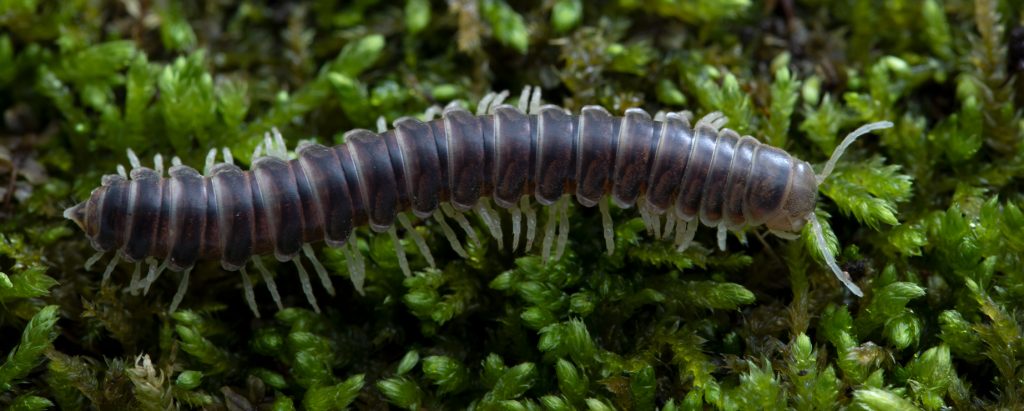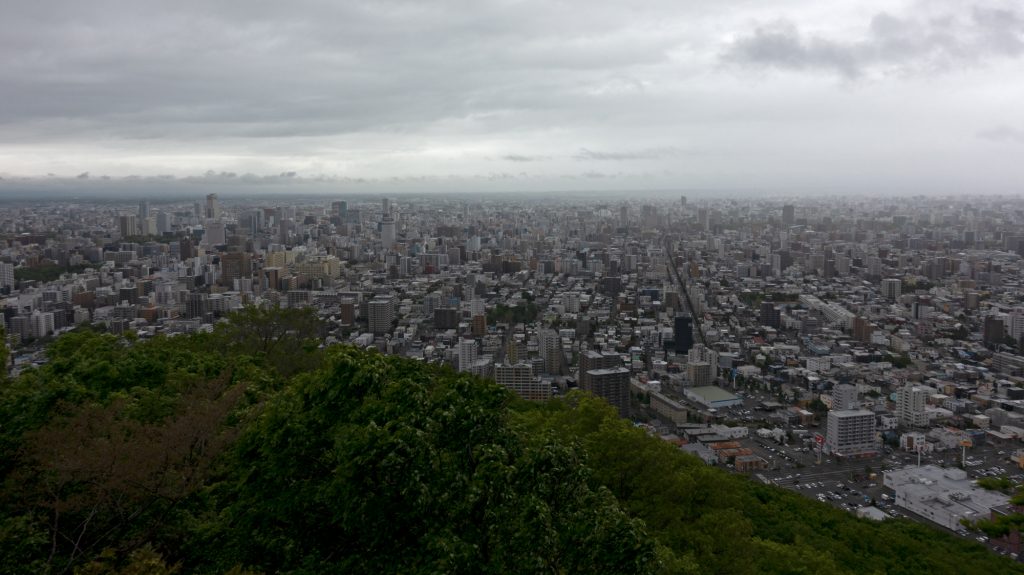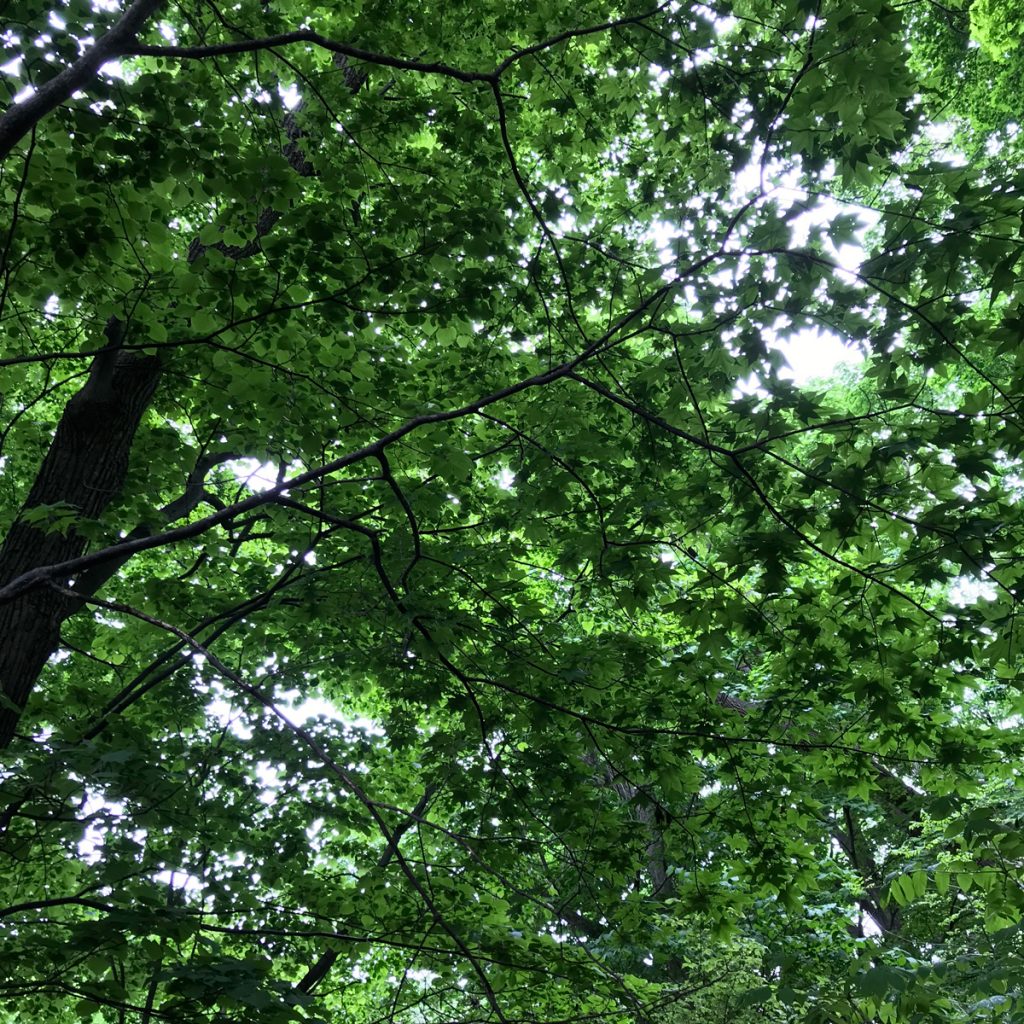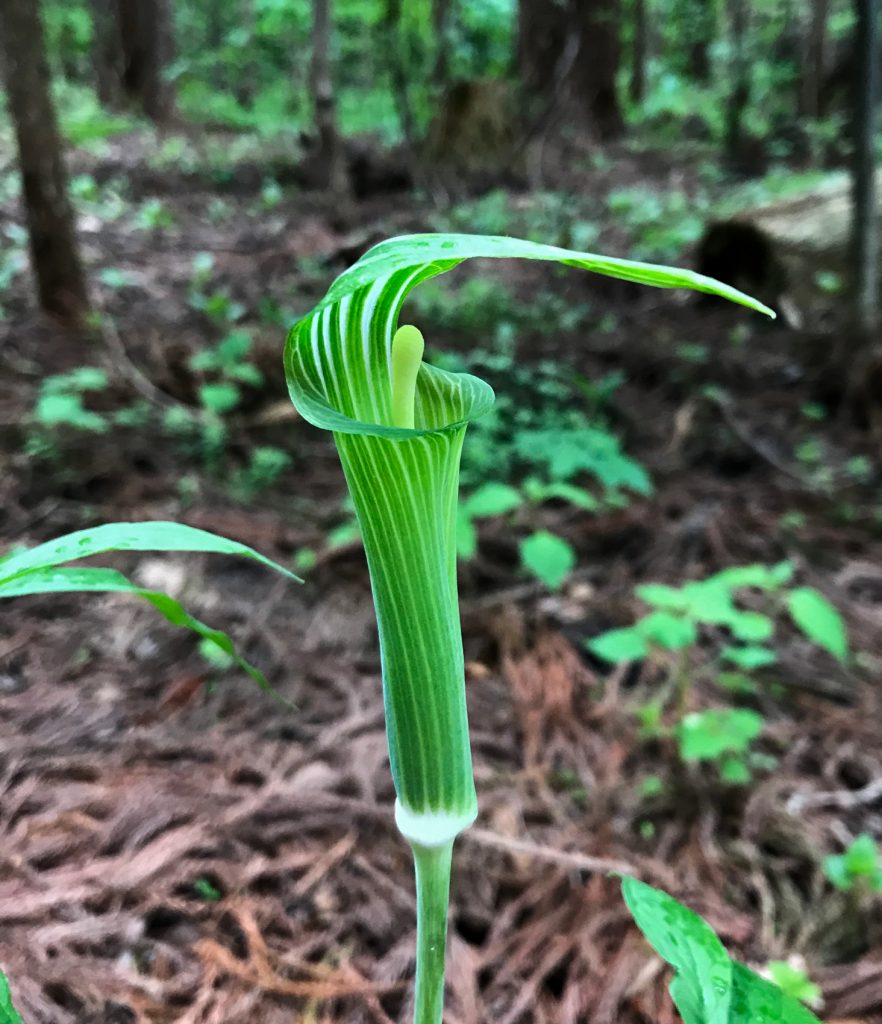Earlier this month, I returned from two weeks of fieldwork in Japan where I collected millipedes and visited my colleague Dr. Tsutomu Tanabe of Kumamoto University. The trip was a wonderful combination of productive fieldwork, great discussions with Tsutomu and his students, and delicious ramen. The field trip was organized to collect millipedes of the family Xystodesmidae, which is the topic of my National Science Foundation grant (DEB #1655635). I started in Sapporo (Hokkaido Prefecture), then travelled to Tsukuba (Ibaraki Prefecture), Kumamoto (Kumamoto Prefecture), and finally Mount Unzen (Nagasaki Prefecture).

The xystodesmid millipede Levizonus takakuwai
Millipedes of the family Xystodesmidae occur in the Holarctic realm (more specifically in North America, East Asia, the Russian Far East, China, Northern Vietnam, and the Mediterranean). My laboratory’s research at Virginia Tech focuses on this family. It’s always exciting to find xystodesmid millipedes because they’re brightly colored and smell like cherries. We continue to discover new species in Appalachia, and even found a new species on Virginia Tech’s campus. Notably, xystodesmids in California are nocturnal and some glow in the dark. In contrast, xystodesmids in Appalachia tend to be diurnal (day active). Because I am familiar with xystodesmids and have collected them from throughout the U.S., it’s been a goal of mine to collect them in Japan.
The first genus on the list was Levizonus, which has eight species. Five of them live in the Russian Far East, one in Korea, and two in Japan. The two Japanese species overlap in their distributions in Sapporo, and include Levizonus takakuwai (Verhoeff, 1941) and Levizonus montanus (Takakuwa, 1941). Levizonus takakuwai occurs in southwestern Hokkaido with a well-documented population at Maruyama Park in Sapporo. This is where we looked first. The previous week, I collected xystodesmids in Virginia, which are day active, so we started fieldwork for L. takakuwai at Maruyama Park in the early morning.

Sapporo from Mount Maruyama, Hokkaido Prefecture
Maruyama Park is composed of deciduous forests with maples, magnolias, and even poison ivy, and stinging nettles, which reminded me of the flora of Appalachia. We spent the entire morning, took a break at noon for ramen, and continued in the early afternoon searching for L. takakuwai. Even with geographical coordinates from Tsutomu, we could not find it. After hiking up to near the peak of Mount Maruyama, I finally found a male L. takakuwai, followed by a female specimen that was collected by Charity. The site was a deciduous forest with lots of maple, and knee-high bamboo growing in large patches. During a hour-long search, two millipedes were found beneath decaying leaves and other moist detritus. Taking note of their scarcity and remembering Tsutomu’s observation that they’re burrowed underground during the day, we planned to return at night with an ultraviolet flashlight. Xystodesmid millipedes are fluorescent and glow green when illuminated with ultraviolet light. I’ve collected xystodesmids in California where they are nocturnal and practically unfindable during the day, but easily found during the night.

Deciduous forest in Maruyama Park, Sapporo

Jack-in-the-pulpit, Maruyama Park
At night, we walked across the grassy field at the edge of Maruyama Park into the forest, turned on our UV flashlights, and immediately found a fluorescent green L. takakuwai emerging from the ground. Then, we found a second, a third, and eventually encountered about 50 millipedes. Levizonus takakuwai, like Californian xystodesmids, is nocturnal and fluorescent. The defense secretions of L. takakuwai are similar to Californian xystodesmids too, and they have less of a cherry odor and smell more like the burnt rubber aroma of Chonaphe, Harpaphe, Xystocheir, and other species from the U.S. West Coast. Having found two millipedes in six hours of collecting during the day and 50 millipedes in 15 minutes at night, we spent almost the entire trip collecting at night.

